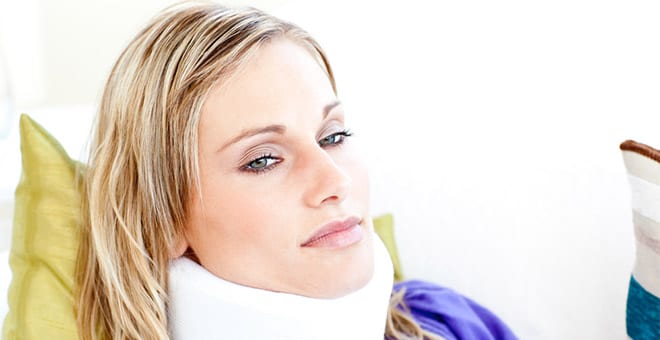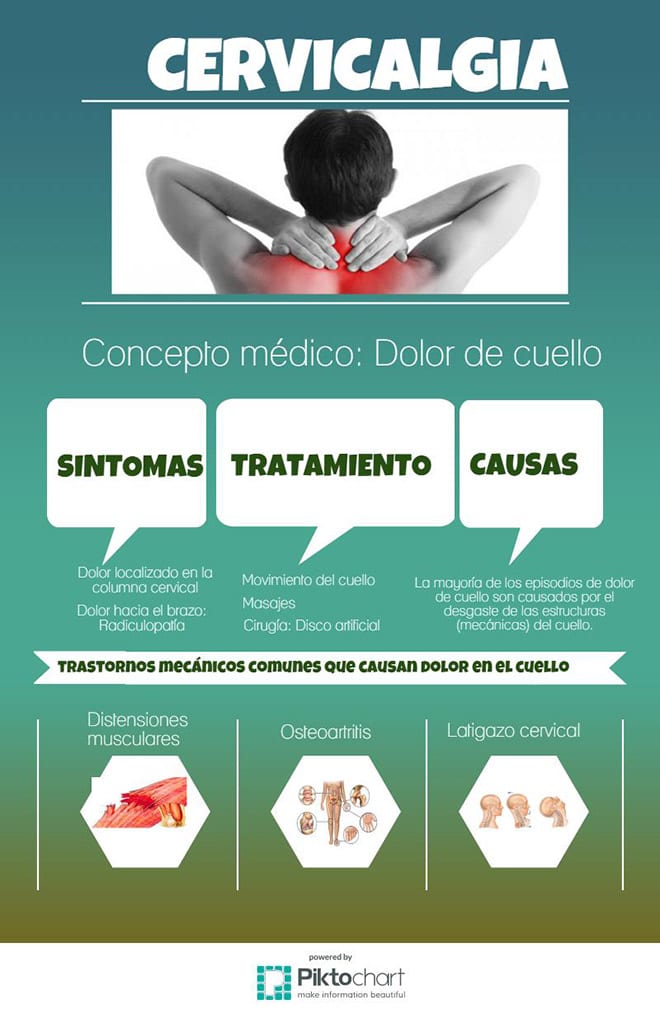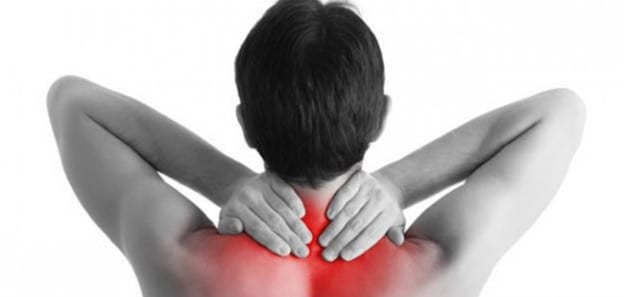Symptoms, treatment, causes
Cervicalgia is a medical concept that comes from Latin, and means neck pain.
Neck pain may indicate overuse problems, usually of structures of the cervical spine. Only rarely is neck pain or cervical pain a sign of a systemic disease. Although the pain can be severe, the good news is that most people with neck pain improve within 1 to 2 weeks, and the vast majority of their episodes within 8 to 12 weeks.
Neck pain affects 10% of the population each year
Whiplash from road traffic accidents is a common cause of neck pain.

Diagnosis of neck pain is determined by clinical history and physical examination, and rarely requires expensive or uncomfortable tests.
The cervical spine is the most mobile part of the spine: it is believed that we move our neck about 600 times per hour.. The cervical spine consists of seven vertebrae, linked together by vertebral discs and supported by muscles and ligaments. From the cervical spine, nerves supply sensation and mobility to the arms.
What is neck pain?
Neck pain is just that: pain in the neck. The pain may be localised in the cervical spine or it may radiate down an arm (radiculopathy). All age groups are at risk of neck pain. People who sit looking at computer screens for long periods of time may be at increased risk. About 10% of the population has an episode of neck pain each year. Neck pain may occur slightly more often in women than in men.
What causes neck pain?
Most episodes of neck pain are caused by wear and tear of the (mechanical) structures of the neck, which are associated with ageing, or with overuse of the neck or arms.. About 10% of neck pain cases are associated with systemic diseases, such as polymyalgia rheumatica.
Common mechanical disorders that cause neck pain are as follows:
- The muscle strains are often related to prolonged physical activity such as sitting at a computer for long periods of time. Acute tension can also occur after sleeping in an uncomfortable position.
- The osteoarthritis resulting from shrinkage of the intervertebral discs (pieces of cartilage between the bones of the spine). Bony growths can cause localised pain in the neck or arm related to nerve compression.
- Herniated intervertebral discs cause arm pain more often than neck pain. A pinched nerve in the neck causes severe arm pain (brachialgia). Herniated discs can cause a loss of nerve function which may include a loss of reflexes, or loss of muscle strength.
- Spinal stenosis is the narrowing of the spinal canal causing compression of the spinal cord (cervical myelopathy). The narrowing is caused by disc bulging, bone spurs, and thickening of the spinal ligaments. Spinal cord compression may not cause neck pain in all cases, but is associated with leg numbness, weakness and loss of bladder or rectal control.
- The whiplash is a rapid forward and backward injury of the soft tissues of the neck, most commonly caused by rear-end collisions. The pain and stiffness associated with these accidents usually develops 24-48 hours after the injury.
- Systemic disorders that can lead to neck pain include ankylosing spondylitis, ankylosing spondylitis, ankylosing spondylitis, ankylosing spondylitis rheumatoid arthritispolymyalgia rheumatica, tumours and infections.
Diagnosis of cervical pain
In most circumstances, the history and physical examination are the essential parts of an evaluation necessary for the diagnosis of neck disorders.. In some cases, people who do not respond to the initiation of therapy can undergo specialised radiographic testssuch as plain x-ray, magnetic resonance imaging (MRI) or computed tomography (CT) to detect additional soft tissue problems, herniated discs, spinal stenosis, tumours or nerve damage.
The therapy of massage has been shown to be helpful for people with chronic muscular neck pain.
Cervical pain. Treatment
The movement maintenance is an important part of neck pain therapy. The use of neck supports should be kept to a minimum.
While regular exercise should be discontinued until neck pain is improved, movement of the neck, gradual movement in all directions, is encouraged. The neck movement extends to muscles that may be excessively tight. This exercise can be particularly useful while standing under a stream of warm water in the shower.
Massages Ice for 5 to 10 minutes applied to the area of pain within 48 hours of the onset of pain can help relieve pain as it can warm, soothe and relax the muscles. Heat should be applied for pain for periods longer than 48 hours.
Individuals with increased stress may have contracted neck muscles. Massage therapy has been shown to be helpful for people with chronic muscular neck pain.
A small minority of patients with neck painparticularly those with arm pain or signs of spinal cord compression, require cervical spine surgery. A new option for neck surgery is a artificial disc. This metal and plastic device is the right choice for a very small number of people with only neck pain and no other abnormality in the cervical spine than a worn disc.

<img src="https://biosalud.org/wp-content/uploads/cervicalgia.jpg" alt="cervicalgia-or-cervical-pain-dizziness"></a></div>



2 thoughts on “Cervicalgia o dolor cervical, mareos…”
I started with neck problems, I do massage after applying Arnica-Belladonna-Ruda ointment which reduces or eliminates the pain. I also take homeopathy for pain which has helped me.
Comments are closed.